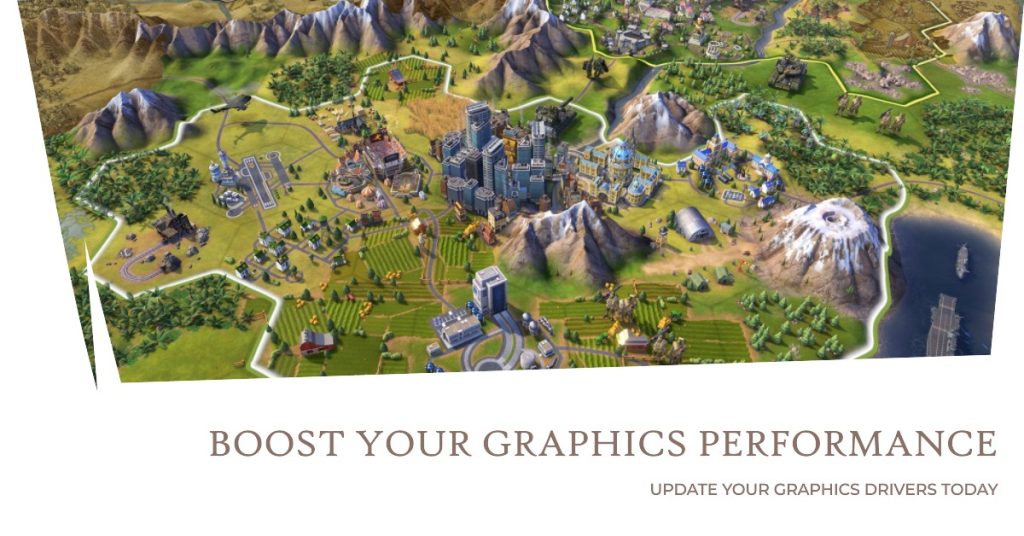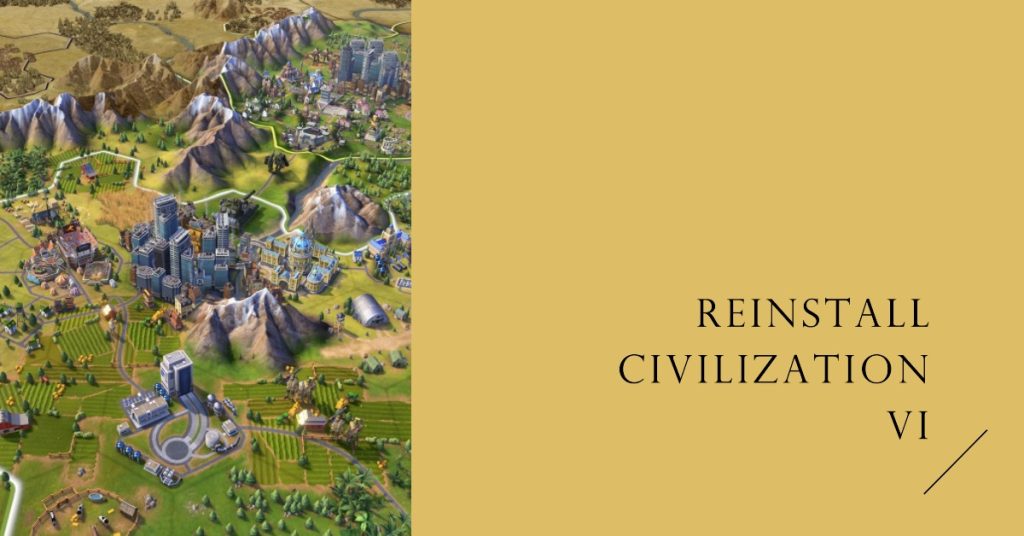Are you facing the exasperating challenge of Civ 6 won’t launch issue? This comprehensive guide presents three effective troubleshooting strategies to help you resolve this issue swiftly, ensuring an uninterrupted and immersive gaming experience. By following these expert recommendations, bid farewell to the frustration of Civ 6 failing to launch and delve back into the captivating world of strategic gameplay.
Here’s how to fix the Civ 6 won’t launch issue
Before performing any of the recommended troubleshooting steps listed below it’s best to restart your computer first. This action refreshes the operating system and remove any corrupt temporary data that could be causing the problem.
There are several factors that can cause this particular problem ranging from an outdated software to a corrupted display driver. Listed below are the recommended troubleshooting steps that you need to do to fix this problem.
1. Install DirectX

The first thing you will need to do in this case is to make sure that you have all the necessary DirectX files installed in your computer.
- Go to https://www.microsoft.com/en-us/download/details.aspx?id=35.
- Download the DirectX End-User Runtime Web Installer file.
- Run the downloaded file to Install DirectX.
- Restart your computer.
Check if the Civ 6 won’t launch issue still occurs.
2. Update your graphics drivers

One of the common reasons why Civ VI won’t launch is because of an issue with the graphics driver. Your computer might have a corrupt display driver or it could be outdated. To fix this you will need to uninstall the driver and then install the latest driver version.
If you have an NVIDIA graphics card then follow the steps listed below.
- Press Win+R (Windows logo key and R key) at the same time to invoke the Run box.
- Type msconfig and click OK. Then the System Configurations will open.
- When System Configuration opens, click the Boot tab. Under Boot options, check Safe boot then click OK.
- When you’re prompted to restart your computer to apply these changes, click Restart then you will boot into Safe Mode.
- Go to your local hard disk by clicking on This PC then Local Disk C. You should be able to see the NVIDIA folder right there. Right-click on it and choose Delete.
- Click Start and type Run. Select Run, the Run dialog box will appear.
- Type “devmgmt.msc” in the run box and click the OK button which should open the Device Manager Window.
- Expand the “Display Adapters” field. This will list all network adapters that the machine has installed. Right click on the Nvidia adapter you want to uninstall and select “Uninstall”.
- Click “OK” when prompted to uninstall the device. This will remove the adapter from the list and uninstall the driver.
- Press Win+R (Windows logo key and R key) at the same time to invoke the Run box.
- Type msconfig and click OK. Then the System Configurations will open.
- When System Configuration opens, click the Boot tab. Under Boot options, uncheck Safe boot then click OK.
- When you’re prompted to restart your computer to apply these changes, click Restart.
- Download the latest NVIDIA driver for your computer from here https://www.nvidia.com/Download/index.aspx.
- Run the setup file and follow the instructions which appear on screen. Choose the Custom installation option and check all the boxes in the custom install options windows. Also check the box which states “perform clean install”.
- Restart your computer
If you have an AMD graphics card then follow the steps listed below.
- Download the AMD Cleanup Utility from here https://www.amd.com/en/support/kb/faq/gpu-601.
- Locate the file where it was saved and double-click on the “AMDCleanupUtility.exe’ file.
- A dialogue box should appear stating AMD Cleanup Utility has detected the system is not in safe mode and provide an option to reboot the system to run the Utility in safe mode:
- Click “Yes” the system will be rebooted and AMD Cleanup Utility will run in safe mode.
- The next dialogue box provides a warning message stating that the AMD Cleanup Utility will remove all AMD driver and application components.
- Click “OK” to continue
- After clicking “OK” the Utility will be minimized to the notification area (system tray) and the progress will be displayed as a tool tip.
- The cleanup process will continue to run in the background. To check the progress, hover the mouse over the AMD icon in the notification area.
- Once the cleanup process is finished, a message is displayed stating it has successfully completed. Click “View Report” to see the list of components that were uninstalled, otherwise click “Finish” to exit the Utility.
- Reboot your computer.
Once the drivers have been uninstalled it’s time to install the latest driver update. You can do this with the help of the AMD Driver Auto-detect tool which you can download from https://www.amd.com/en/support.
- Visit the AMD Driver and Support page and see section Auto-Detect and Install Radeon Graphics Drivers for Windows.
- Click the DOWNLOAD NOW button to begin downloading the executable file for the tool.
- Once download is complete, run the file to launch the Installer.
- Click Install to extract the needed files.
- After file extraction is complete the tool should automatically launch.
- Review the End User License Agreement and information about the User Experience Improvement Program.
- Click Accept and Install to continue or close the window to exit the AMD Driver Auto-detect tool.
- After clicking Accept and Install, the tool will attempt to detect the installed AMD graphics product and operating system.
- Upon successful detection of your system configuration, the tool will display the latest Recommended and Optional driver packages that are compatible with your graphics product, as well as the currently installed driver version
- Select the desired version and choose Express installation.
- After the driver package has been downloaded, installation should begin automatically.
- Restart your computer
If you have an integrated graphics (Intel)
- Press the Windows Logo key + R to launch a Run
- Type devmgmt.msc into the Run dialog and press Enter to launch the Device Manager.
- In the Device Manager, expand the Display adapters
- Right-click on your graphics drivers, click on Uninstall and then go through the uninstallation wizard to uninstall the drivers.
- Restart your computer. Once your computer boots up, it should automatically reinstall the same version of the graphics drivers.
Check if your are still having issues Civ 6 won’t launch.
3. Reinstall Civilization VI

In case the above steps fails to fix the problem then you will need to uninstall then reinstall the game. To do this just open the Steam client then go to Library. Look for Civ6 on the left side of the screen then right click on it and click on Manage. From the manage link you should find the uninstall option, click on this.
Once the game has been uninstalled restart your computer then install it again.
Check if the Civ 6 won’t launch issue still occurs.